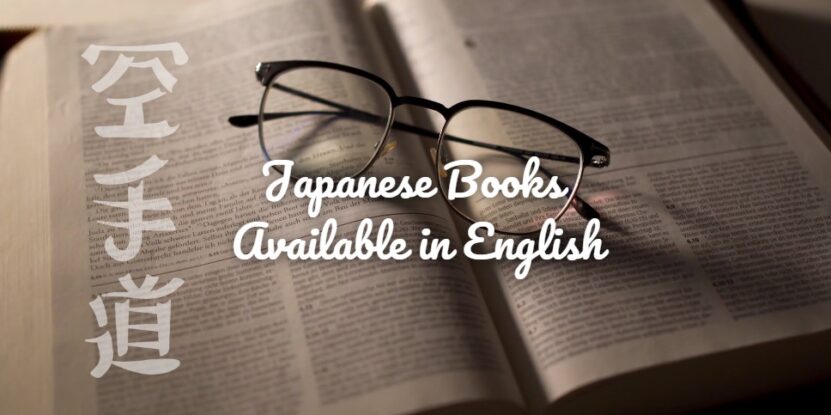- The Tale of Genji by Murasaki Shikibu is considered the finest work of literature in Japanese history and where Japanese literature began, making it a must-read for those interested in Japanese literature.
- I Am a Cat by Natsume Soseki is a satirical ode to Japan’s favorite domestic animal, a portrayal of Meiji-era Japan, and its uneasy East-West fusion, offering a glimpse into Japan’s cultural development and changes over time.
- The Woman in the Purple Skirt by Natsuko Imamura is a deadpan funny novel that puts laser focus on the lives of down-and-out women in modern Japan, spreading the wings of one of Japan’s best contemporary writers.
- The Reason I Jump by Naoki Higashida is an unprecedented exploration of living with non-verbal autism, written by a 13-year-old boy who communicates his thoughts, feelings, and emotions using a cardboard keyboard, making it a remarkable and informative read for anyone.
- Snow Country by Yasunari Kawabata is a love story between a Tokyo man and a geisha who lives and works in a mountainous onsen town, and considered the most aesthetically beautiful and sublime Japanese novel, making it a must-read for fans of romantic literature.
- The Silent Cry by Kenzaburo Oe depicts the family struggles of 20th-century Japan, telling the story of two brothers who return to their childhood village, bringing with them new-found baggage to a home that is being changed by the tides of modernity, providing an insight into Japan’s social and cultural changes during the 20th century.
- Kokoro by Natsume Soseki is Japan’s most beloved author’s finest work, exploring the relationship between a young and impressionable man and his sensei in three parts set between Kamakura and Tokyo, offering insights into Japan’s cultural and philosophical traditions.
| Title | Author | Genre |
|---|---|---|
| “Norwegian Wood” | Haruki Murakami | Fiction |
| “The Wind-Up Bird Chronicle” | Haruki Murakami | Fiction |
| “Kafka on the Shore” | Haruki Murakami | Fiction |
| “1Q84” | Haruki Murakami | Fiction |
| “Snow Country” | Yasunari Kawabata | Fiction |
| “Penance” | Kanae Minato | Mystery/Thriller |
| “The Devotion of Suspect X” | Keigo Higashino | Mystery/Thriller |
| “Out” | Natsuo Kirino | Mystery/Thriller |
| “Convenience Store Woman” | Sayaka Murata | Fiction |
| “After Dark” | Haruki Murakami | Fiction |
| “The Travelling Cat Chronicles” | Hiro Arikawa | Fiction |
| “Kitchen” | Banana Yoshimoto | Fiction |
| “The Sailor Who Fell from Grace with the Sea” | Yukio Mishima | Fiction |
| “Colorless Tsukuru Tazaki and His Years of Pilgrimage” | Haruki Murakami | Fiction |
| “The Tale of Genji” | Murasaki Shikibu | Classic/Literature |
| “A Tale for the Time Being” | Ruth Ozeki | Fiction |
| “The Sound of Waves” | Yukio Mishima | Fiction |
| “Rashomon and Seventeen Other Stories” | Ryunosuke Akutagawa | Short Stories |
| “The Elephant Vanishes” | Haruki Murakami | Short Stories |
| “The Book of Tea” | Kakuzo Okakura | Non-fiction/Essays |
| “Spring Snow” | Yukio Mishima | Fiction |
| “Thousand Cranes” | Yasunari Kawabata | Fiction |
| “The Pillow Book” | Sei Shōnagon | Classic/Literature |
| “Audition” | Ryu Murakami | Horror/Thriller |
| “Woman in the Dunes” | Kōbō Abe | Fiction |
| “Battle Royale” | Koushun Takami | Fiction/Thriller |
The East Unveiled: Best Japanese Literature Translated into English
1. The Tale of Genji by Murasaki Shikibu
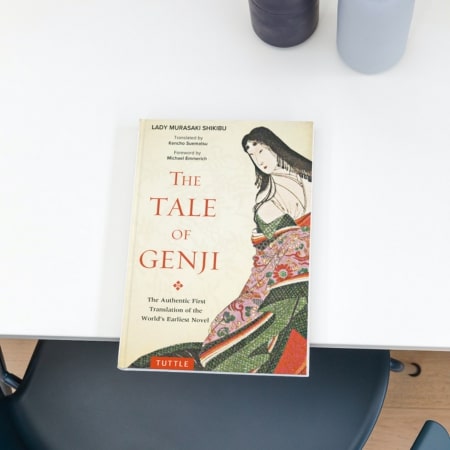
As a lover of literature, I’m eager to share with you a true gem of Japanese books – The Tale of Genji by Murasaki Shikibu. This classic masterpiece holds a special place in Japanese history, as it marks the beginning of Japanese literature as we know it. Beyond its historical significance, it is also considered to be the best work of literature in Japanese history. In this section, we’ll explore the roots of Japanese literature and how The Tale of Genji is widely regarded as an unparalleled masterpiece that transcends time and culture.
Where Japanese literature began
The roots of Japanese literature can be traced back to ancient manuscripts and mythological texts such as the Kojiki and Nihon Shoki. These early documents were the foundation upon which later works such as The Tale of Genji by Murasaki Shikibu, considered to be one of the finest works in Japanese literature, were built. Written in the eleventh century, it tells the story of a nobleman’s romantic escapades at court. Its influence on Japanese literature is immeasurable.
Moreover, from the Meiji period onwards, writers like Natsume Soseki emerged and brought about a literary transformation. Through his satirical ode to Japan’s favorite domestic animal, I Am a Cat showcases Japan’s uneasy fusion with Western culture. It was followed by Natsuko Imamura’s The Woman in the Purple Skirt – a contemporary novel that brings attention to women who are struggling to make ends meet.
It is noteworthy that while Yasunari Kawabata’s Snow Country continues to be admired for its poetic beauty and aesthetic appeal, Kenzaburo Oe’s The Silent Cry portrays societal changes through family struggles. On the other hand, Naoki Higashida’s groundbreaking book, The Reason I Jump provides insight into living with non-verbal Autism; he sensitively communicates his thoughts using a cardboard keyboard.
Therefore, exploring this rich collection of literature is essential for anyone who wants to understand where Japanese literature began and how it has transformed over time. Don’t miss out on discovering these masterpieces that have made Japanese literature renowned around the world.
Move over Shakespeare, Murasaki Shikibu’s The Tale of Genji is where it’s at in terms of literary masterpieces.
Considered the finest work of literature in Japanese history
The work hailed as the apex of Japanese literature is a captivating saga called “The Tale of Genji” by Murasaki Shikibu. Considered the epitome of literary prowess, this masterful piece delves into life among nobles in 11th century Japan. Written mainly in cursive script, it features over 50 chapters and an array of characters each with their intricate backstory and relationships. The novel’s poetic language and dense symbolism still captivate readers even after centuries, making it undoubtedly the finest work of literature in Japanese history.
In this remarkable novel, “The Tale of Genji” exhibits an intricate cosmology that examines the complexities and heartaches of love, loss, and impermanence. Its portrayal of courtly life has been acclaimed for its exquisite attention to detail. Besides its elegant prose style, it stands out for its profound emotional depth that draws readers into the lives, loves and intrigues experienced by both men and women within ancient Japan’s aristocratic society.
“The Tale of Genji” has traversed generations without losing its essence or diminishing its significance. Even after a thousand years since its inception; new generations continue to find something remarkable and captivating about the drama unfolded through Murasaki Shikibu’s deft penmanship and storytelling skills. Thus scholars widely accept that what makes this epic different from others attempts we have today is the sheer aura elegance graced upon it which qualifies it to be considered the finest work of literature in Japanese history.
Its complex nature may make it challenging for beginners starting on Japanese literature. To properly understand this historical literary masterpiece, a strong background understanding in early Japanese history would go a long way in helping one appreciate what makes “The Tale of Genji” stand out as Japan’s finest work of literature ever written. A few other exceptional works like Yasunari Kawabata’s “Snow Country,” Natsume Soseki’s “Kokoro” – also showcase some strong characteristics that make them unique in their right for anyone looking to revel in the beauty of Japanese literature.
Cats may have nine lives, but in Natsume Soseki’s satirical novel, one feline narrator is enough to capture the essence of Meiji-era Japan.
2. I Am a Cat by Natsume Soseki
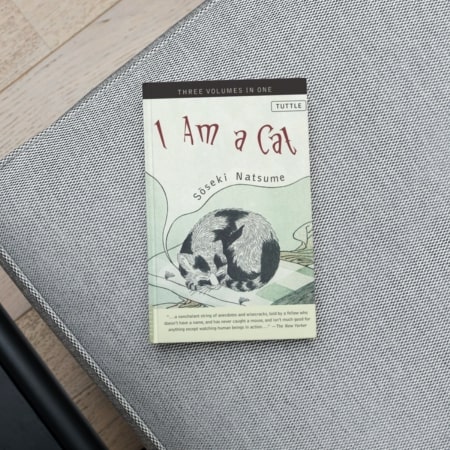
As a lover of Japanese literature, I couldn’t leave out mentioning Natsume Soseki’s masterpiece, “I Am a Cat.” I really really really LOVE this book! It’s so good!
This satirical novel offers a unique perspective on Japan’s favorite domestic animal, the cat, creating a light and entertaining read. Soseki’s humor and wit adds a breath of fresh air, providing a break from the serious tones commonly found in Japanese literature.
Moreover, this novel is a masterpiece in terms of its accurate portrayal of Meiji-era Japan and the East-West fusion that was present at the time. “I Am a Cat” provides an insightful and amusing look into Japanese culture and society, and is a must-read for anyone wanting to explore Japanese literature in depth.
Satirical ode to Japan’s favorite domestic animal
A work of literary genius, ‘I Am a Cat’ by Natsume Soseki presents a satirical tribute to the Japanese love for their favorite domestic animal. The novel is a portrait of Meiji-era Japan and the difficulties faced as the country tries to balance East-West influences. The cat serves as a relatable narrator, providing insights into the absurdities of human behavior from a feline perspective. With its humor and critique of societal conventions, ‘I Am a Cat’ remains one of Japan’s most celebrated novels.
Unique details include how the main cat character uses its feline viewpoint to offer comical observations on human behaviors. Additionally, the book is rich in cultural references that give an insight into ancient Japanese practices.
Pro Tip: Reading other works by Natsume Soseki like “Botchan” and “Kokoro” gives more context on his experiences with Western modernization and Meiji Japan’s political climate.
In ‘I Am a Cat’, Soseki expertly exposes Japan’s love for felines while satirizing its rapidly changing society in the Meiji-era.
A portrait of Meiji-era Japan and its uneasy East-West fusion
During the Meiji-era in Japan, there was an uneasy blend of East-West cultures that impacted society and literature. Natsume Soseki’s novel ‘I am a Cat’ provides insight into this era with its satirical commentary on Japan’s traditional values and modernizing ways. The story portrays the Westernization of Japanese society through the cat’s interactions with humans and their newly adopted Western habits. Moreover, the novel exemplifies the disorientation felt by both Japanese citizens and the government as they struggle to reconcile their Eastern roots with Western influence.
Additionally, ‘I am a Cat’ depicts the emergence of a new literary genre known as shosetsu or “personal narrative.” This genre was a response to the Enlightenment period where individualism took center stage – something that conflicted with Japan’s communitarian culture – leading authors like Soseki to blur traditional storytelling techniques to express their new reality.
A unique feature of this novel is how it combines humor, satire, and social critique which makes the novel stand out from many others written at this time. Through his characterizations and critique, Soseki captures various aspects of daily life that continue to resonate with readers today.
Pro Tip: Read ‘I am a Cat’ along with other significant works from Meiji-era Japan like Sanshiro by Natsume Sōseki or Kokoro (Heart) by Sōseki. Imamura’s witty and astute novel shines a spotlight on the struggles of modern Japanese women, proving that even the most down-and-out characters can bring about laughter.
3. The Woman in the Purple Skirt by Natsuko Imamura
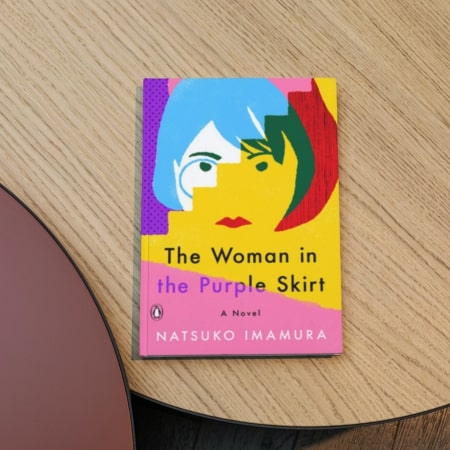
I recently stumbled upon an excellent book titled “The Woman in the Purple Skirt” by Natsuko Imamura, and I couldn’t put it down. It not only highlights the struggles of modern-day women in Japan but also showcases the best of contemporary Japanese literature. This book is a work of art, with Imamura’s writing drawing the reader into the story and making them feel like they’re living the characters’ lives. Throughout the novel, Imamura shares a bleak portrayal of the hardships of down-and-out women, but the story is still incredibly funny and entertaining. I was amazed at how skillfully Imamura wove in humor while keeping a laser focus on the characters’ lives.
Spreading the wings of one of Japan’s best contemporary writers
One of Japan’s best contemporary writers, Natsuko Imamura, has gained a reputation for her witty and insightful works. Her novel, The Woman in the Purple Skirt, has played a significant role in spreading her literary wings. Set in modern-day Japan, it focuses on the everyday struggles of marginalized women with deadpan humor and laser-sharp focus. Imamura’s writing style is unique and refreshing, making her stand out as one of the most exciting voices in contemporary Japanese literature.
Imamura also explores themes of social inequality and gender roles from a refreshingly feminist perspective. Rather than preachy or moralistic, she uses humor as a tool to bring attention to her quietly revolutionary ideas. The Woman in the Purple Skirt is just one example of her mastery of this subtle yet powerful approach to storytelling.
Natsuko Imamura’s books are essential not only for understanding contemporary Japanese society but for exploring universal themes that transcend cultures and borders. She skillfully weaves intricate storylines that are emotionally insightful and intellectually engaging, capturing the imagination of readers worldwide.
Pro Tip: If you’re interested in exploring feminist perspectives in contemporary Japanese literature, be sure to check out Natsuko Imamura’s works.
The Woman in the Purple Skirt brings humor and heart to the struggles of Japan’s forgotten women, making you laugh and cry all at once.

A deadpan funny novel that puts laser focus on the lives of down-and-out women in modern Japan
The novel focuses on the lives of struggling women in contemporary Japan, with a touch of humor. It highlights their daily struggles and hardships as they navigate through life’s challenges. The story captures hilarious anecdotes intertwined with captivating plot twists.
Through finely-crafted humor, the author presents various themes like love, friendship, and societal pressure with well-concealed irony. She captures the essence of an average woman’s life while keeping us entertained.
This unique book boldly portrays Japanese women as strong individuals fighting against harsh living conditions. Despite being humorous, it sheds light on estranged families, strained relationships, and society’s prejudice against marginalized groups.
As recommendations for anyone interested in reading literature about modern-day Japan, we suggest critically acclaimed books that depict human relationships like ‘Norwegian Wood’ by Haruki Murakami or novels like ‘Persona’ by Akiko Shimojima that offer a profound look into contemporary Japan’s realities through fictional characters.
Get ready to gain a new perspective on living with non-verbal autism with Naoki Higashida’s heartfelt exploration.
4. The Reason I Jump by Naoki Higashida
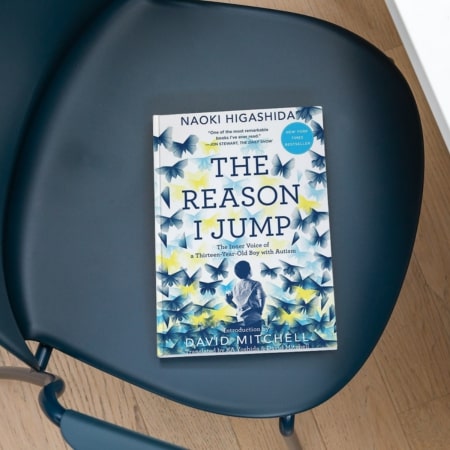
As I delved deeper into the world of Japanese literature, one book that captivated my attention is “The Reason I Jump” by Naoki Higashida. The author, a 13-year-old boy, pens down his lived-experience with non-verbal autism in this book. The book is unique, and it offers an unprecedented exploration of living with non-verbal autism. Naoki Higashida communicates his thoughts, feelings, and emotions through a cardboard keyboard, and it’s fascinating to see the world through his eyes. It’s a heartwarming and insightful read for anyone looking to gain a better understanding of individuals with autism and their unique perspective on the world.
An unprecedented exploration of living with non-verbal autism
This exceptional work of Naoki Higashida is a unique exploration of life with non-verbal autism. The book delves deep into the autistic mind, expressing feelings and thoughts in an unprecedented way. Higashida, through his cardboard keyboard, communicates with the world around him in this brilliant autobiography.
Higashida’s ‘The Reason I Jump’ showcases a young boy’s journey of living with non-verbal autism. This work is unparalleled in its ability to describe complicated emotions that individuals on the autism spectrum may experience. It gives insight into previously misunderstood behaviors and thought processes from an insiders’ perspective.
This work stands out for its creation by an individual unable to communicate typically, presenting a unique window into that group’s lives. Unlike other works touching on developmental differences, Higashida’s account deals primarily with the emotional experiences rather than merely giving medical-based descriptions.
The novel hosts personal anecdotes about coming to terms with one’s place in society while also dealing with stigmatization and ignorance from others. This book serves as an excellent basis to promote more understanding about neurological differences but reads like an excellent narrative too.
Who needs a fancy laptop when you have a cardboard keyboard and a brilliant mind?
Written by a 13-year-old boy who communicates his thoughts, feelings, and emotions using a cardboard keyboard
This novel was innovatively written by a 13-year-old boy, Naoki Higashida, who expresses his ideas, emotions, and thoughts using a cardboard keyboard. “The Reason I Jump” is an exceptional piece that explores the challenges of living with non-verbal autism with remarkable clarity.
The fact that an adolescent with autistic tendencies created such a poignant work via a cardboard keyboard adds a unique charm to this book’s story. Naoki’s work conveys the struggles of those with non-verbal autism while inspiring advocacy for the cause in readers.
Moreover, the book offers readers profound insights and foster empathy towards individuals living with similar disorders. “The Reason I Jump” is nothing short of brilliance as it pushes aside stereotypes to reveal life through an underrepresented community’s eyes.
Interestingly, “The Reason I Jump” has made various prestigious booklists worldwide due to its sheer authenticity and readability.
Get lost in the beauty of a love story between a Tokyo man and a geisha, set in a picturesque onsen town in Snow Country by Yasunari Kawabata.
5. Snow Country by Yasunari Kawabata
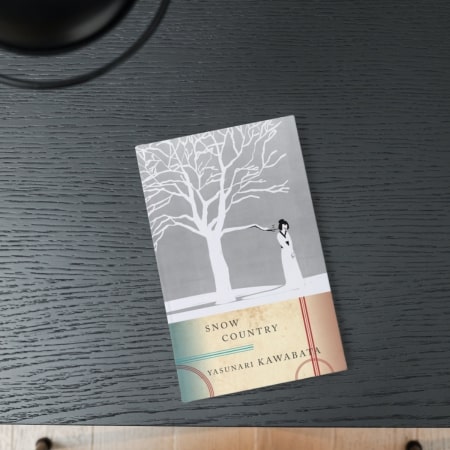
I recently came across a Japanese novel that left an indelible impression on me, Snow Country by Yasunari Kawabata. This book is considered one of the most aesthetically beautiful and sublime Japanese novels ever written. It tells the story of a love affair between a man from Tokyo and a geisha who lives and works in an onsen town nestled in the mountains. The novel explores the complexities of their relationship against the backdrop of the stunning natural beauty of the region.
In this section, I will delve into the themes and motifs of this masterpiece and share why it is an unmissable read for anyone interested in the richness of Japanese literature.
Considered the most aesthetically beautiful and sublime Japanese novel
Snow Country by Yasunari Kawabata is widely accepted as the pinnacle of Japanese literature’s aesthetic and sublime beauty. A love story between a man from Tokyo and a geisha living and working in a mountainous onsen town, Snow Country weaves together prose with the natural environment and explores the interplay between human emotions and nature. Kawabata’s words inspire vivid imagery, capturing delicate moments, ephemeral experiences, and fleeting emotions that combine to create an unparalleled masterpiece.
The novel stands proud as one of Japan’s most beloved literary works, exhibiting a rare poetic style that creates an otherworldly atmosphere permeating its settings and bringing depth to its characters. As the story progresses, Kawabata builds upon his description of snowy landscapes to paint an all-encompassing painting of melancholy nostalgia – one that lingers on reader’s minds long after they have finished the novel.
Unique details include deconstructed character motivations through their seemingly mundane exchanges – refreshing candor that liberates readers from typical romantic clichés.
Pro Tip: Experience Snow County like never before by reading it with a cup of hot tea on a snowy winter night – allowing yourself to immerse in the carefully crafted descriptions of nature while embracing the romance unfolding through simple yet breathtaking prose.
A geisha, a Tokyo man, and a snowy mountain town – Snow Country’s love story will leave you feeling warm and fuzzy inside (despite the icy setting).
A love story between a Tokyo man and a geisha who lives and works in a mountainous onsen town
In a breathtaking tale, Yasunari Kawabata tells the story of a Tokyo man who falls in love with a geisha working at an isolated onsen town in the mountains. ‘Snow Country‘ is one of the most aesthetically beautiful and sublime Japanese novels ever written. In this masterpiece, Kawabata explores themes of nature, isolation, and unfulfilled desires through his characters’ intimate moments and internal musings.
The protagonist Shimamura is married, wealthy, and leading a shallow life in Tokyo when he first meets Komako, the geisha who lives in a remote mountain village near the onsen town. As their relationship deepens over time amidst the stark beauty of the snow country, their intimacy becomes all-consuming for both parties – but it comes at a great cost to their personal lives.
Kawabata uses vivid imagery to contrast Shimamura’s world-weariness with Komako’s innocence, highlighting how their experiences shape their understanding of love and longing. The setting serves as more than just a backdrop – it heightens the overall atmosphere of longing and desire that permeates throughout the novel.
Through ‘Snow Country’, readers are transported to a world where beauty is fleeting and unrequited love can be both devastating and transformative. It is a truly mesmerizing work that continues to captivate readers around the world to this day.
Family baggage meets modernity in Kenzaburo Oe’s The Silent Cry, a poignant portrayal of two brothers returning to their childhood village.
6. The Silent Cry by Kenzaburo Oe
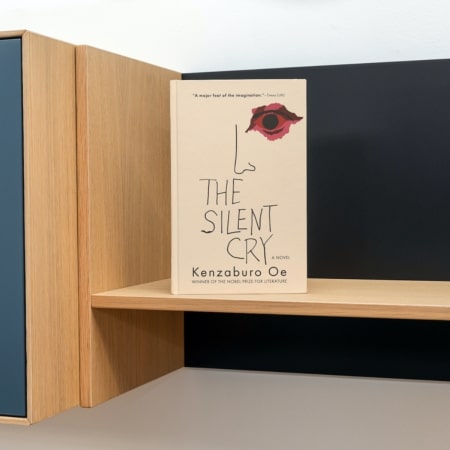
As a lover of Japanese literature, I stumbled upon a masterpiece that epitomizes post-war cultural identity and familial challenges. The Silent Cry, authored by Kenzaburo Oe, is a heart-wrenching story of two brothers who are forced to confront harsh realities upon their return to their village. Through their journey, Oe highlights family struggles during Japan’s 20th-century upheavals. The novel holds a mirror to the social upheavals that rocked Japan as it struggled to modernize while preserving its cultural identity, making it a must-read for anyone interested in Japanese literature.
Depicts the family struggles of 20th-century Japan
The Silent Cry by Kenzaburo Oe is a touching narrative that explores the struggles of Japanese families in the 20th century. The story revolves around two brothers who return to their hometown, bringing with them new found baggage to a home that is being transformed by modernity. Throughout the book, Oe’s portrayal of family dynamics and interpersonal relationships in rural Japan’s changing landscape can be felt. The book presents themes of loss, mental illness, suicide, and existentialism unique to Japanese culture that have contributed to its global recognition as an award-winning novel.
This seamless portrayal of family struggles provides readers with an insight into how centuries’ worth of social and economic changes impacted life in Japan for families in particular during the 1900s. Oe effortlessly chronicled contemporary issues such as divorce, abortion, teenage pregnancy along with those rooted deep within Japanese traditions like honor killings “jiketsu”. These issues and plotlines have made it easy for readers from across the globe to connect with the complex narrative portrayed.
Furthermore, The Silent Cry has been hailed as one of the finest novels exploring both cultural and psychological aspects of Japanese literature. Its fiction roots undoubtedly shaped history while highlighting distinctive societal issues still ever-present in contemporary Japan today.
Two brothers bring more baggage than just their suitcases when returning home to a village caught between tradition and modernity in The Silent Cry by Kenzaburo Oe.
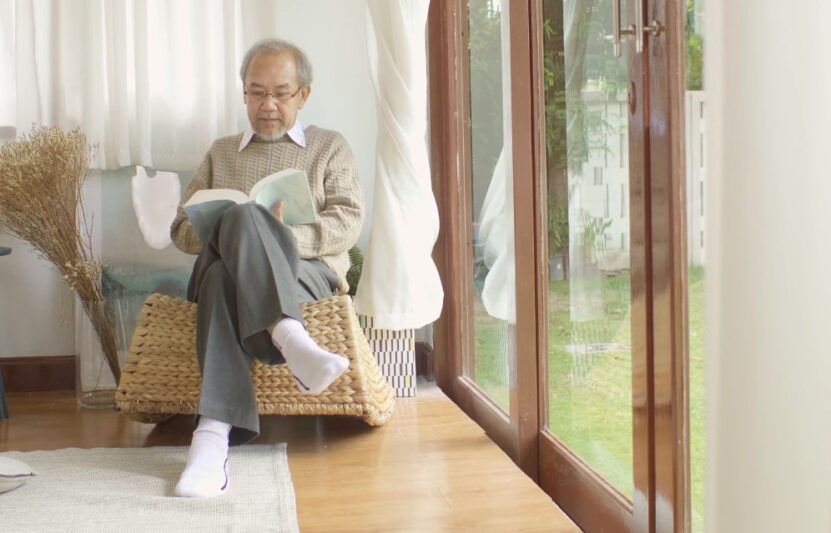
Tells the story of two brothers who return to their childhood village, bringing with them new-found baggage to a home that is being changed by the tides of modernity
The Silent Cry by Kenzaburo Oe portrays the story of two brothers who revisit their ancestral town, which is experiencing significant changes due to modernization. Their return is accompanied by the weight of new personal problems that influence their interactions with both themselves and their family members. The novel highlights the family’s struggles in the changing social landscape of 20th-century Japan. As they delve deeper into their past, they realize that returning home has placed a heavier burden on them than expected. The novel presents an intimate portrayal of the brothers’ individualistic struggle against a backdrop of societal progression.
The brothers return home as outsiders, carrying with them inner baggage while coming to terms with being estranged from their past and culture, which have since changed significantly due to modernization. While grappling with their personal issues, familial relationships become more complex due to generational rifts between old tradition and new developments. In this way, Oe captures the broader conflict between societal progress and familial roots within the framework of Japan’s history of change.
Oe deftly intertwines universal themes such as sacrifice, legacy, and loyalty in telling this story through powerful prose evoking a sense of isolation and dislocation amongst other virtues in his work.
Pro Tip: The Silent Cry provides an in-depth exploration of individuals caught between the rigidity of tradition and progressiveness. The story immerses readers in a world where layers of contradiction surround every aspect – providing insight into how society navigates through these transitional periods.
Prepare to have your heart tugged and your mind blown as you delve into the complex relationship between a young man and his sensei in Kokoro by Natsume Soseki.
7. Kokoro by Natsume Soseki
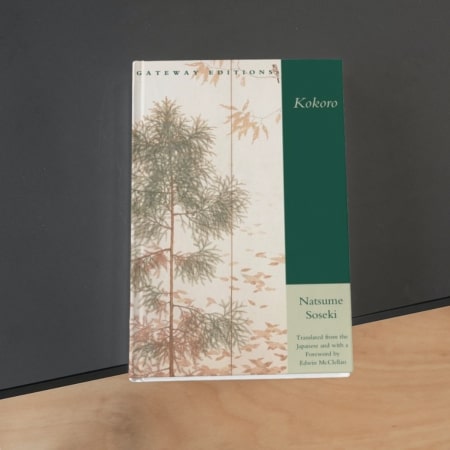
As I delved into the world of Japanese literature, I came across one book that stood out from the rest – Kokoro by Natsume Soseki. It’s a masterpiece that still resonates with readers since its publication over a hundred years ago. In this work, Soseki explores the complex relationship between a young and impressionable man and his sensei, set against the backdrop of Kamakura and Tokyo. Japan’s beloved author’s finest work is a trilogy that offers a deep and philosophical exploration of the human condition. Let’s discover more about Kokoro and why it’s a must-read for any Japanese literature enthusiast.
Japan’s most beloved author’s finest work
Regarded as the finest literary work in Japanese history, ‘Kokoro’ by Japan’s most beloved author remains an unparalleled masterpiece. The novel expresses deep insights into human emotions while exploring the relationship between a young man and his mentor in three parts taking place respectively in Kamakura and Tokyo. The poignant narrative is characterized by Soseki’s literary finesse, which is marked by its simplicity and depth.
The novel’s central plot follows the protagonist’s maturation and growth from a naive young adult to an introspective character capable of empathizing with others. ‘Kokoro’ manifests many themes of Soseki’s literature, including apathy, individualism, social alienation, and identity crisis. Additionally, it highlights the challenges faced during Japan’s turbulent years of modernization and westernization.
Soseki was known for incorporating contemporary issues into his works and doing so appealingly. His style defined modern Japanese literature while questioning traditional norms that had existed for centuries. The success of ‘Kokoro’ lies not only in its excellence but also its immense influence on subsequent contemporary Japanese literature, particularly Natsume Soseki works.
Interestingly, ‘Kokoro’ translates to the heart or emotional core in English fitting elegantly with both content and title enhanced even further by classical poem quotes sprinkled throughout.
Explores the relationship between a young and impressionable man and his sensei in three parts set between Kamakura and Tokyo.
The novel Kokoro, one of the finest works by Japan’s most beloved author, Natsume Soseki, takes place in three parts set between the cities of Kamakura and Tokyo. It delves into the relationship between a young and impressionable man and his sensei. The novel explores various themes such as loyalty, honor, guilt, and shame while highlighting the differences between traditional Japanese values and Western-inspired modernity.
Throughout the book, Soseki skillfully depicts the challenges faced by young Japanese men during an era when Japan was caught amid changing social norms and cultural values. As a result, many young men struggled to find their identity and purpose in life. Mainly due to this struggle is how Soseki develops his characters throughout the story.
Kokoro is revered for its literary excellence because it brilliantly evokes emotions of both hope and despair with quotable prose that amplifies Soseki’s storytelling abilities.
It is widely believed that Kokoro is a semi-autobiographical work based on Soseki’s personal experiences through which he projects realism onto his characters.
Five Facts
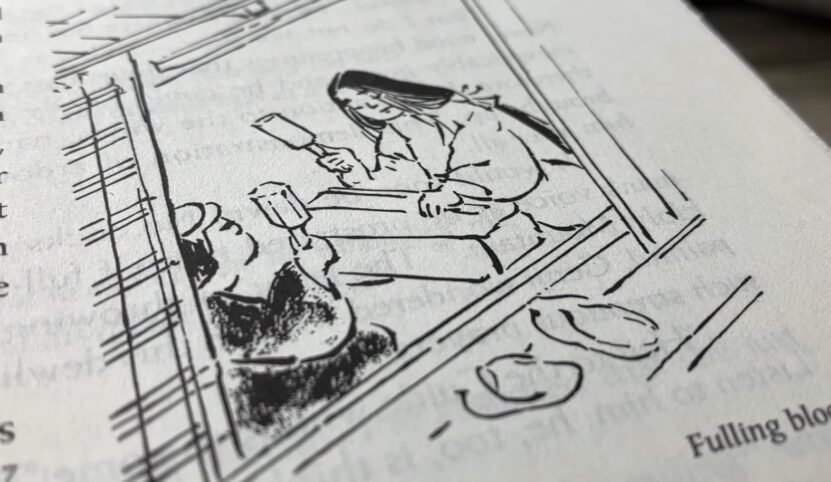
- ✅ “The Tale of Genji” by Murasaki Shikibu is widely agreed to be the finest work of literature in Japanese history. (Source: Team Research)
- ✅ “I Am a Cat” by Natsume Soseki is a satirical ode to the nation’s favorite feline and a portrait of the uneasy East-West fusion Japan was experiencing during the Meiji era. (Source: Team Research)
- ✅ Natsuko Imamura’s “The Woman in the Purple Skirt” won the coveted Akutagawa Prize and is a powerfully thought-provoking and deadpan funny portrayal of down-and-out women in modern Japan. (Source: Team Research)
- ✅ “The Reason I Jump” by Naoki Higashida is a heart-wrenching exploration of the inner-workings of an autistic mind, providing profound insights for both individuals with autism and their families. (Source: Team Research)
- ✅ “Snow Country” by Yasunari Kawabata is considered the most aesthetically beautiful and sublime Japanese novel, a bleak but poetically magnificent love story between a Tokyo man and a geisha. (Source: Team Research)
FAQs
What is the most famous Japanese literature?
The Tale of Genji by Murasaki Shikibu is widely regarded as the most famous Japanese literature. Written by an educated noblewoman during Heian period Japan, it is also considered to be the world’s first novel and the finest work of literature in Japanese history.
What are Japanese light novels?
Japanese light novels, often referred to as “ranobe” (a contraction of the words “light” and “novel” in Japanese), are a popular form of Japanese literature. Light novels are typically targeted towards young adult and adolescent readers, although they can be enjoyed by readers of all ages. They are characterized by their unique style, which combines elements of prose, manga, and anime.
Here are some key features of Japanese light novels:
- Length: Light novels are generally shorter compared to traditional novels, with an average length ranging from 50,000 to 80,000 words. However, there can be variations, and some light novels can be longer or shorter.
- Visual Elements: Light novels often include illustrations, typically black and white, that enhance the reading experience. These illustrations can depict characters, scenes, or important moments within the story.
- Serialization: Many light novels are initially serialized in magazines or online platforms before being published in book format. This serialization format allows authors to receive feedback from readers and make adjustments to the story accordingly.
- Genre Diversity: Light novels cover a wide range of genres, including fantasy, science fiction, romance, mystery, adventure, and more. They often incorporate elements of Japanese pop culture, such as gaming, anime, and otaku (geek) culture.
- Narrative Style: Light novels typically have a fast-paced and accessible writing style, making them engaging and easy to read. The prose may incorporate dialogue, internal monologues, and descriptive passages.
- Adaptations: Light novels are known for their frequent adaptations into other forms of media, such as manga, anime, and live-action adaptations. This interconnectedness between different media formats helps to further popularize light novel series.
Some popular light novel series include “Sword Art Online” by Reki Kawahara, “The Melancholy of Haruhi Suzumiya” by Nagaru Tanigawa, “Attack on Titan: Before the Fall” by Ryō Suzukaze, and “Overlord” by Kugane Maruyama.
Overall, Japanese light novels offer an exciting and immersive reading experience, combining captivating stories with visual elements that appeal to fans of anime, manga, and Japanese popular culture.
Where can I find free Japanese books?
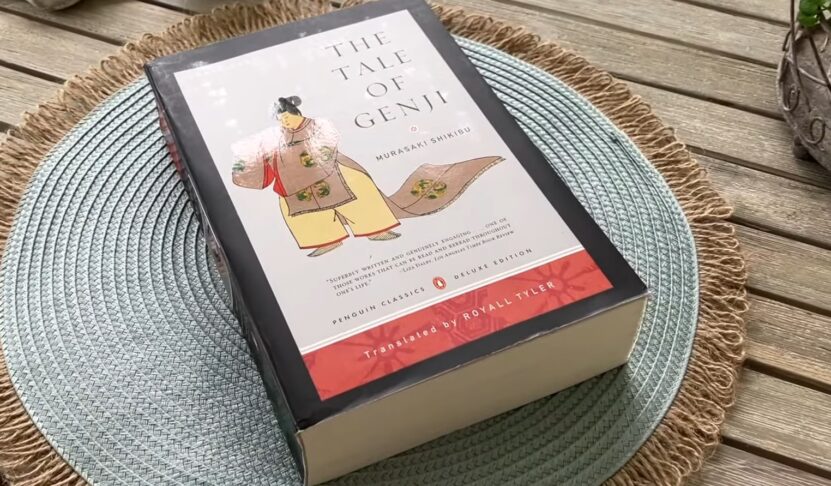
There are several resources available online where you can find free Japanese books. Please keep in mind to respect copyright laws in your country when accessing these resources. Some may require you to sign up for a free account or may have a mixture of paid and free content. Here are a few:
- Project Gutenberg: This site offers over 60,000 free eBooks which include a few Japanese books. Visit www.gutenberg.org to find out more.
- AOZORA BUNKO (青空文庫): Aozora Bunko is a digital archive of Japanese literature in the public domain. In addition to modern literature, Aozora Bunko includes many works of historical importance; it has the entire works of authors like Akutagawa Ryunosuke. Visit www.aozora.gr.jp/
- ManyBooks: This site offers more than 50,000 free eBooks in various languages including Japanese. Visit www.manybooks.net
- Internet Archive: Internet Archive is a non-profit library of millions of free books, movies, software, music, websites, and more. They have a decent selection of Japanese literature. Visit www.archive.org
- HathiTrust Digital Library: This is a partnership of academic and research institutions offering a collection of millions of titles digitized from libraries around the world, including Japanese books. Visit www.hathitrust.org
- Open Library: This is part of the Internet Archive and lists millions of books, many of which are available to read online for free. Visit www.openlibrary.org
- Google Books: Some books are available in full and others offer previews. You can search for Japanese books and sort by “Free Google eBooks” in the tools section. Visit books.google.com
Remember that these websites offer literature in its original language, so they will be beneficial if you’re looking for native materials to improve your reading skills. However, some of these might not be suitable for beginners.
For learning Japanese specifically, there are resources like NHK World’s web lessons or apps like Duolingo, Memrise, and Rosetta Stone. Also, Tae Kim’s Guide to Learning Japanese and Jisho (a Japanese-English dictionary) are available online for free and are fantastic resources for Japanese language learners.
Why are Japanese novels so good?
The quality of a novel is somewhat subjective and can depend on the individual’s tastes and cultural backgrounds. That being said, there are several elements found in Japanese novels that many people appreciate:
- Unique Cultural Perspective: Japanese culture has a rich history and unique traditions that give rise to unique perspectives and themes in literature. The interplay of traditional and modern aspects of Japanese society often serves as an intriguing backdrop in Japanese novels.
- Richness in Detail: Japanese novels often have a meticulous attention to detail. Even the smallest everyday routines can be described in a poetic, thoughtful manner, providing a profound look into characters’ lives.
- Emotion and Introspection: Japanese novels often explore the inner lives of characters with a depth of emotion and introspection that is quite engaging. Themes like loneliness, existential dread, and the struggle to find one’s place in the world are often deeply explored.
- Style: Japanese writing style can be starkly different from Western literature. There’s often a balance between the spoken and unspoken, with a lot being conveyed through subtlety and implication. This ‘show, don’t tell’ approach can be refreshing for readers used to more explicit storytelling.
- Innovation and Experimentation: Many Japanese authors are known for pushing boundaries and experimenting with narrative structure and style. Writers like Haruki Murakami and Yoko Ogawa, for instance, are known for blending elements of magical realism with everyday life in a way that is both strange and relatable.
- Influence of Poetry: Japanese literature is heavily influenced by its poetic tradition. This can lead to prose that is rich in symbolism and imagery, and which often seeks to evoke a specific mood or emotion.
- Diversity: Finally, Japanese literature is incredibly diverse, with a range of authors writing in many different genres and styles. This means that there’s likely something for everyone, whether you enjoy crime thrillers, historical dramas, science fiction, fantasy, romance, or literary fiction.
Remember, though, that these are just generalizations. Not all Japanese novels will exhibit all of these characteristics, and these elements can be found in the literature of many other cultures as well. Nevertheless, these are some of the elements that contribute to the global appreciation of Japanese novels.
Who is the best author in Japan?
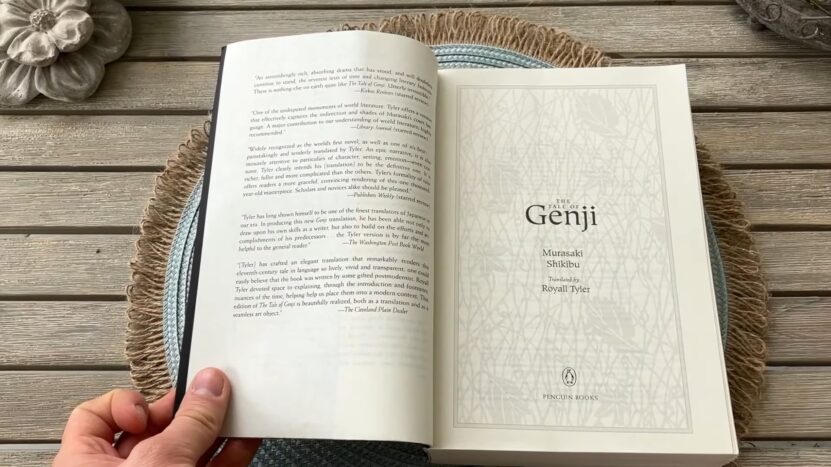
It’s hard to say who is the best. My favorite is Banana Yoshimoto! I love his name 🙂 Minions love him too :))))
- Haruki Murakami: Known for his surreal and imaginative novels, Murakami’s works often blend elements of magical realism with deeply introspective explorations of human identity. Some of his most well-known works include “Norwegian Wood”, “Kafka on the Shore”, and “1Q84”.
- Kenzaburō Ōe: Ōe is one of Japan’s most respected contemporary authors and received the Nobel Prize in Literature in 1994. His works often deal with complex social and philosophical themes.
- Yasunari Kawabata: Kawabata was the first Japanese author to receive the Nobel Prize in Literature in 1968. He is well-known for his poetic and subtle writing style. Some of his most famous works include “Snow Country” and “The Old Capital”.
- Banana Yoshimoto: Yoshimoto’s works are popular both domestically and internationally, dealing with themes like love, loss, and the experiences of modern Japanese youth. Her most famous novel, “Kitchen”, has been translated into more than 20 languages.
- Yukio Mishima: Considered one of the most important Japanese authors of the 20th century, Mishima’s work touched on themes such as beauty, death, and political ideology. His most famous works include “The Temple of the Golden Pavilion” and the “Sea of Fertility” tetralogy.
- Osamu Dazai: Known for his self-referential and melancholic works, Dazai’s “No Longer Human” is considered a masterpiece of Japanese literature, dealing with themes of existential dread and social alienation.
- Natsume Soseki: Often considered the greatest writer in modern Japanese history, Soseki’s works include “I Am a Cat”, “Kokoro”, “Sanshiro”, and “Botchan”. He examined the tension between traditional Japanese culture and Western values.
Is it hard to learn Japanese?
Learning any language requires time, effort, and dedication, and Japanese is no exception. The difficulty of learning Japanese can vary depending on several factors, including your native language, your previous language learning experience, and the methods and resources you use for learning. Here are some factors that can contribute to the perceived difficulty of learning Japanese:
- Writing System: Japanese uses three writing systems: hiragana, katakana, and kanji. Mastering these systems, especially kanji (which consists of thousands of characters), can be challenging. However, it’s worth noting that you can start with hiragana and katakana, which are relatively simpler, and gradually build your kanji knowledge over time.
- Grammar Structure: Japanese has a different grammatical structure compared to many Western languages. Sentence order, verb conjugation, and politeness levels can take some time to grasp. However, once you understand the patterns and rules, it becomes more manageable.
- Politeness Levels: Japanese has a complex system of politeness levels, known as keigo. Understanding and using the appropriate level of politeness can be challenging, but it becomes easier with practice and exposure to the language.
- Pronunciation: Japanese pronunciation is generally considered to be straightforward. However, certain sounds like the double consonants (e.g., “tsu” in “tsuki”) and the distinct vowel sounds may require practice to master.
- Cultural Context: Learning a language is not just about grammar and vocabulary but also understanding the cultural context and social nuances. Japanese has its unique cultural aspects that are intertwined with the language, which may require additional effort to comprehend fully.
While Japanese can be perceived as challenging, it is also a rewarding language to learn. Here are some positive aspects of learning Japanese:
- Consistent Pronunciation: Japanese pronunciation is generally consistent, with a straightforward correspondence between sounds and written characters. Once you learn the basic phonetic rules, you can read most words correctly.
- Resources Availability: There are numerous resources available for learning Japanese, including textbooks, online courses, language exchange programs, and cultural immersion opportunities. This abundance of resources makes it easier to find study materials that suit your learning style.
- Cultural and Professional Opportunities: Japan has a rich cultural heritage and is a hub of technology, business, and entertainment. Learning Japanese can open doors to better appreciate Japanese literature, films, anime, manga, and music. It can also enhance career prospects if you plan to work in Japan or with Japanese companies.
- Personal Interest and Motivation: If you have a genuine interest in the Japanese language and culture, your motivation can help overcome the challenges. Having a passion for what you’re learning can make the journey more enjoyable and rewarding.
Remember that language learning is a journey, and progress takes time. Consistent practice, exposure to the language through various mediums, and immersion in Japanese culture can greatly facilitate your learning process.

